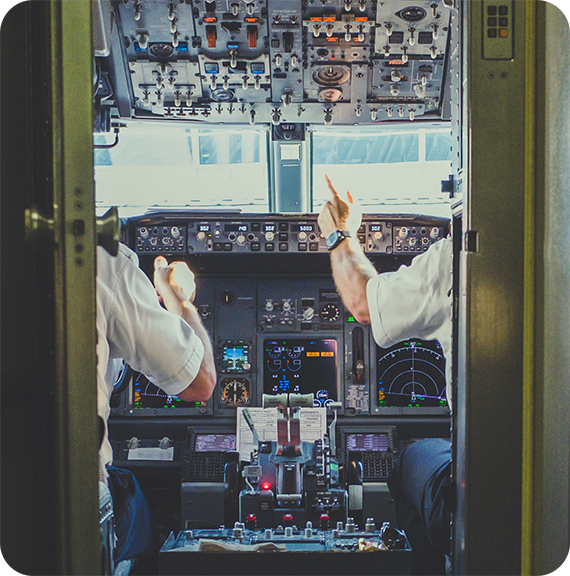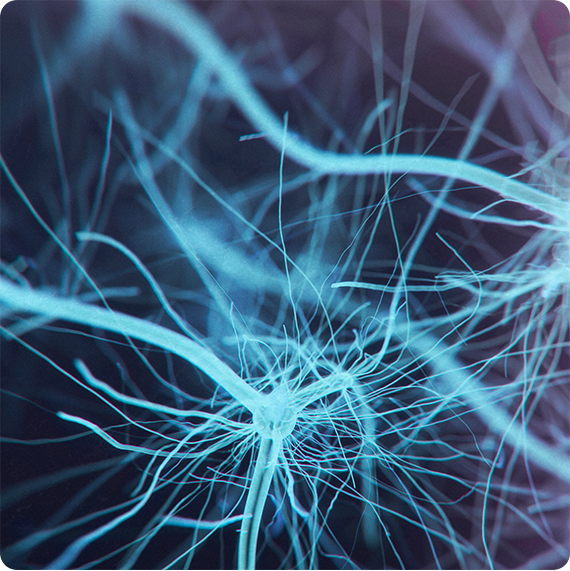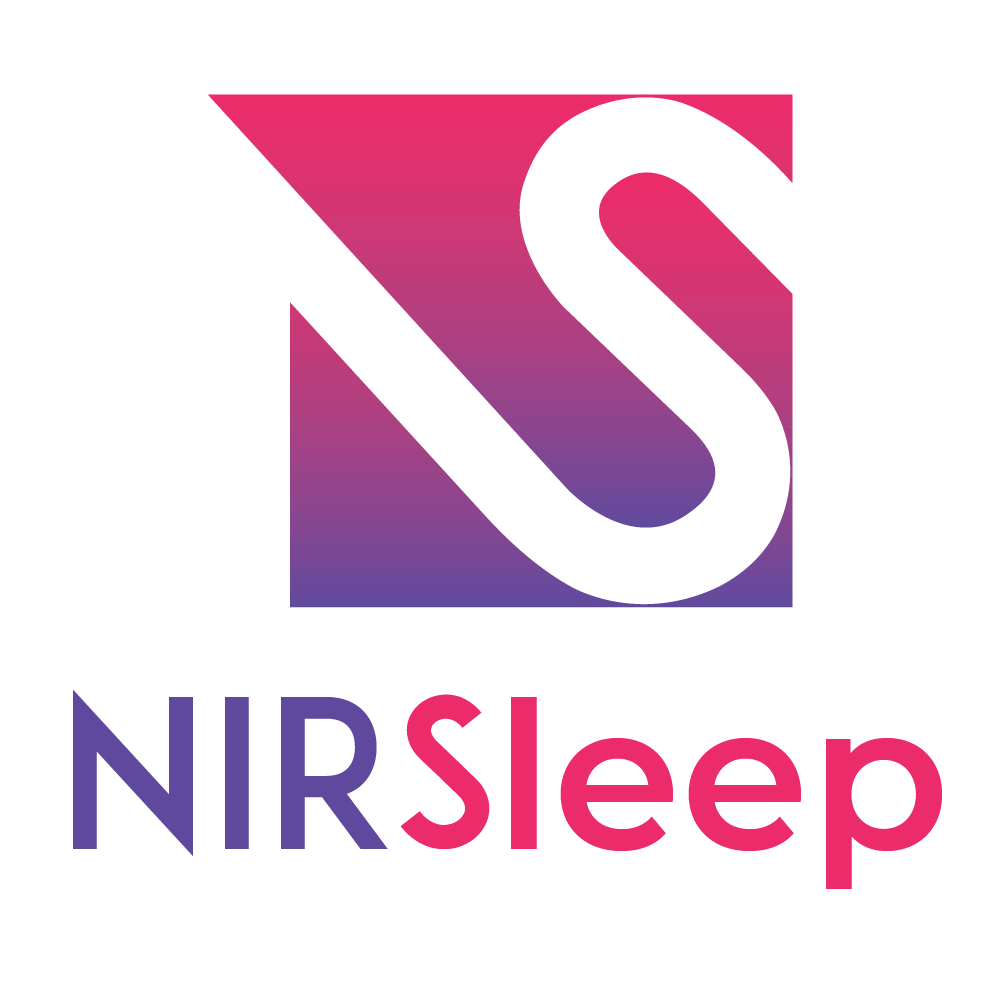
Applications
PORTABLE NEUROSCIENCE, POWERFUL INSIGHTSfor Performance Optimization
Chronic fatigue from sleep loss contributes to costly and avoidable mistakes at work, on the road, and in relationships. Clinical sleep disorders are also comorbid with many other neurological disorders, as well as with cardiovascular and metabolic conditions. While many American adults suffer from reduced sleep, some groups are at greater risk for negative consequences such as remote or infirm populations.
Unfortunately, the gold standard clinical sleep test, polysomnography (PSG), is neither broadly available and nor field-deployable. Additionally, PSG suffers from many well-known limitations:
- Restricted patient movement due to the continuous patient tether to the recording system, sometimes inducing the very same disturbed sleep the system intends to detect;
- Measurement of peripheral oxygen saturation when cerebral oxygenation is more clinically relevant;
- Measurement of brain activity using only scalp EEG, which is clinically insufficient for the diagnosis of insomnia; and
- The current practice of scoring sleep tests manually with each scoring session requiring hours of time by trained experts.
Some of these same limitations also apply to current fielded sleep monitors that rely on either simplified EEG or the combined correlation of wrist-measured actigraphy, heart rate variability, and peripheral oxygen saturation.
A more ecologically valid method to remotely monitor sleep in at-risk populations would provide greater insight for decision makers and care providers. While traditional PSG requires a suite of predominantly electrical physiological measurement systems to generate hypnogram data, NIRSleep uses an ultracompact device to optically derive cerebral hemodynamic parameters and cranial actigraphy to accurately monitor the patient’s orientation. By correlating oxygenation with sleep state, the NIRSleep platform is designed to capable of self-scoring sleep stages for better analysis and understanding. Such a platform will not only improve the diagnosis of the source of chronic fatigue but also enhance the long-term efficacy of treatments and solutions.

Hypoxia Detection
in Pilots
Hypoxia in pilots is a well-known flight risk and has recently become a highly public challenge for safe airframe operation in extreme conditions. Reduced cognitive performance, lack of fine motor control, and disorientation are all life-threatening conditions for pilots operating complex and high-speed machines. Hypoxia symptoms can result in pilot uncertainty, grounding fleet operations, or loss of life.
The causes of hypoxic conditions vary across operating conditions, air frames, and individual pilot physiology. High g maneuvers, complex oxygen scavenging systems, and systems of valves and filter stages make pinpointing root causes extremely complex.
However, integrating an ultracompact cerebral oximeter into pilots’ helmets would provide immediate feedback and real time monitoring of the outcomes of blood oxygenation changes to the brain, the ultimate source of hypoxia symptoms. This information can alert the pilot when cerebral oxygenation is dropping and before the condition is irreparable. It could also be communicated to remote supervisory teams monitoring aircraft operation and pilot needs. Rather than simply monitoring low oxygen from onboard oxygen generating systems (OBOGS), such a forehead-worn sensor could immediately and irrefutably determine a low oxygen condition in the pilot’s brain and then trigger a simple warning to begin corrective action.

Monitoring Patients
during Aeromedical Evacuation
Transporting wounded patients rapidly between stages of care often relies on aircraft. Flights in reduced-pressure aircraft (e.g. cabin altitude of 8,000ft) introduce additional risk exposure to their already wounded charges. In addition to the host of challenges this presents for intubated and ventilated patients, reduced-pressure transport presents their already compromised biological systems with an additional risk for reduced cerebral oxygenation. Hypoxia is known to worsen neurological injury.
Ultracompact and lightweight cerebral oximetry can provide vigilant monitoring with low footprint, overhead, and complexity. Rather than adding complexity, training, and cost to crowded aircraft that already have many complex systems, NIRSleep’s unobtrusive wearable device could provide a simple heads-up green/yellow/red indicator of cerebral oxygenation state for easy review and action by attending caregivers.

Cognitive Load Monitoring
and Human-Agent Teaming
fNIRS technology like that used in the NIRSleep system has recently shown evidence of determining cognitive workload. Research indicates that as task engagement increases, the concentration of oxygenated blood in the prefrontal cortex increases commensurately. As tasks become increasingly difficult, prefrontal oxygenation is reduced. Decision makers have never had a portable objective measure of cognitive load of this sort, relying instead on subjective interpretation of user engagement and understanding. NIRSleep’s real-time indicator of cerebral oxygenation could function as an indicator of increased intellectual engagement and as a proxy measure for cognitive performance. Human performance and learning optimization through neurofeedback would significantly alter the paradigm for training, fatigue monitoring or task engagement, and performance readiness.
The ability to assess human cognitive performance passively, unobtrusively, and in real time opens bold possibilities for teaming with nonhuman agents such as service animals, machines, and computers. Such sensors can increase situational awareness for otherwise limited performers to better provide the support the human needs when and how they need it.

Neuroscience
Research
The fundamental ability to measure cerebral oxygenation in a rugged and wearable platform opens new opportunities in many different fields. NIRSleep Inc was founded by scientists and engineers, and we’re driven to enable new discoveries that can increase understanding and improve care. While most fNIRS research tools use a whole-head measurement system, the NIRSleep fNIRS device only measures cerebral oxygenation in the user’s prefrontal cortex. While the NIRSleep device collects data on fewer channels than existing research systems, the device’s portability opens new applications for unobtrusive sensing in the user’s native environment and potentially more ecologically-valid observations. Contextualizing the information NIRSleep collects unobtrusively in a user’s native setting can improve neuroscience understanding and result in better decision making for research objectives and outcomes.



